Invited Speakers
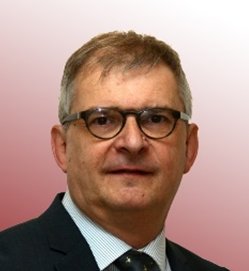
Michael W. BAUER
SME Munich Aeroacoustics, Germany
Abstract : Low-altitude aviation and some peculiarities of its noise impact
Future air traffic at low altitude will be based on novel air vehicles, such as drones and air-taxis. While drones, e.g., for delivery of goods may be processed decentralized, passenger air-taxis will be operated at vertiports close to city centers, e.g., connected to big rail hubs, close to civil airports, but also in smaller communities in the vicinity of larger cities. In any case it can be expected, this novel air transportation industry will create aircraft noise especially in those areas, where currently no significant noise from airports or en-route airliners is given, its characteristics will also be quite different from the well-known air traffic noise. The large variety of aircrafts’ technical layouts, designs and operational modes, which in some cases differ massively from current commercial aviation, require a very detailed knowledge of the noise sources and their changes of their characteristics while operating the vehicles at low altitudes. Besides still not officially applicable requirements for noise certification, the discussion about using noise metrics, which are the best to describe IAM/UAM/AAM noise, is still ongoing. But not only classical noise levels, commonly used in aviation industry, which in general can be directly derived from measurements or simulations, are being discussed more-and-more in the context of low-altitude vehicles, especially when the question of public acceptance comes into the picture. This requires the inclusion of non-acoustic parameters that make noise impact assessment an important part of future infrastructure and land-use planning together with an appropriate traffic management.
The presentation is going to address the abovementioned topics and related challenges about noise, trying as much as possible to provide a relevant summary of current questions which are in the focus of the aircraft industry, aircraft operators, and communities.
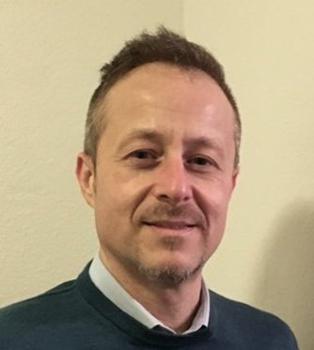
Damiano CASALINO
Delft University of Technology, the Netherlands
Abstract : New trends and challenges in the field of rotor aeroacoustics: from sUAS noise to eVTOL community noise
This keynote presentation explores emerging challenges and recent advances in rotor aeroacoustics, with a particular focus on applications spanning small unmanned aerial systems (sUAS) to electric vertical take-off and landing (eVTOL) aircraft. The talk is structured in two main parts. In the first part, Urban Air Mobility (UAM) presents significant new challenges for community noise assessment, as novel rotorcraft configurations operate closer to densely populated areas. This part introduces a model-based, multi-fidelity simulation framework for evaluating the noise impact of eVTOL vehicles across complete flight missions. High-fidelity simulations using Lattice-Boltzmann / Very Large Eddy Simulation (LB/VLES) methods are employed to capture complex aeroacoustic mechanisms such as Blade-Vortex Interaction (BVI) and broadband noise from laminar separation bubbles (LSBs) at low Reynolds numbers. These physical phenomena are particularly relevant in multi-rotor and low-tip-speed scenarios, where transitional boundary layers and wake interactions dominate noise generation. Acoustic data generated from such simulations are compiled into a Noise Hemisphere Database (NHD), which, when coupled with efficient propagation models, enables realistic estimation of ground-level noise footprints in urban environments. The integrated workflow supports mission-level analysis and identification of noise-critical flight segments, offering a scalable approach to community noise mitigation. Additionally, this part discusses emerging strategies for hybrid digital/physical noise certification. These aim to replace rigid flight profiles with scenariobased evaluation methods, leveraging validated simulations to ensure regulatory compliance across diverse eVTOL designs. The second part of the keynote shifts focus to recent methodological developments in computational aeroacoustics, particularly in the use and enhancement of the Ffowcs Williams & Hawkings (FW-H) acoustic analogy. While the classical FW-H formulation has proven effective for predicting far-field noise from rotorcraft, its standard implementations face challenges in complex flow configurations, especially in the presence of wake turbulence or jet flows, and transonic tip speeds. To overcome these limitations, improved formulations and numerical treatments have been developed that better account for quadrupole corrections and treatments of the transonic singularity. These advancements significantly improve the robustness and accuracy of acoustic predictions, especially for modern rotor systems operating near compressibility limits or in non-uniform inflow conditions. Their integration into high-fidelity CFD frameworks enables a deeper understanding of rotor noise physics and supports the development of quieter rotorcraft and eVTOL designs.

Bao CHEN
AVIC Aerodynamics Research Institute, China
Abstract : Research on Whole-path Wind Tunnel Test Technology of Rotor Aerodynamic Noise
Rotor noise is a primary noise source for aircraft such as helicopters and eVTOLs, and wind tunnel testing serves as a crucial means for validating rotor noise reduction designs. Research activities on whole-path wind tunnel testing technologies for rotor aerodynamic noise based on an 8-meter-scale large aeroacoustics wind was given in this paper. From the perspective of noise source identification, a 4-meter aperture, 130-channel microphone phased array was developed, along with a rotating sound source identification algorithm based on signal reconstruction. Regarding noise propagation, a low-noise in-flow microphone support structure was designed and a 22-channel scanning U-shaped in-flow microphone array was developed. For near-field noise reception, surface-mounted microphones with embedded installation methods were adopted to achieve acoustic load measurement on aircraft surfaces. In terms of far-field noise reception, a hemispherical far-field noise characterization array was designed to enable high-resolution measurement of noise directivity. A unified data acquisition and processing platform was employed to collect, process, and correct various noise signals. The BO-105 model was utilized to complete whole-path wind tunnel testing verification covering noise source identification, in-flow acoustic propagation, and near/farfield acoustic reception of rotor noise, achieving a seven-time repeatability accuracy of 0.59dB for far-field directivity measurements.
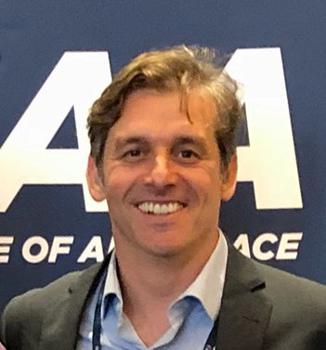
Julio CORDIOLI
Federal University of Santa Catarina, Brazil
Abstract : Analysis of Model Fidelity for the simulation of Propeller Noise generation and propagation
The rapid growth of electric vertical take-off and landing (eVTOL) aircraft and drones has introduced new challenges in urban and regional noise management. Community acceptance and regulatory certification depend strongly on the ability to predict and mitigate propeller noise, particularly in the complex near-field environment around the aircraft. While a variety of prediction methods exist—from analytical formulations to scale-resolved simulations—a systematic comparison of models that capture both source generation and propagation remains limited. This study addresses this gap by comparing different prediction approaches under simplified static and free-field conditions representative of eVTOL and drone propellers. Three methods are employed for source computation: Blade Element Momentum Theory, a potential panel method, and the Lattice-Boltzmann method. Noise propagation is modeled with the frequency-domain Green’s function, the Galerkin discretization of Lighthill’s acoustic analogy, and Direct Noise Computation. These techniques are combined into seven hybrid models of varying fidelity. Their predictive capabilities are assessed using near-field sound pressure levels from a 27-inch diameter propeller operating at subsonic speeds. Comparisons at the first few blade-passage frequency harmonics provide insight into the accuracy and applicability of each approach, supporting the development of reliable noise assessment tools for next-generation aerial mobility systems.
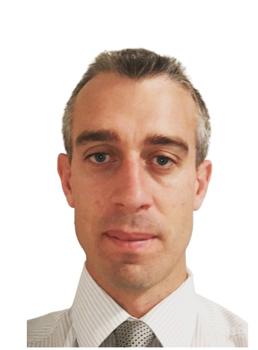
Michael KINGAN
University of Auckland, New Zealand
Abstract : Ground-Board Mounted Microphones for Aircraft Noise Measurement
A number of standard methods for measuring noise from aircraft recommend using ground-board mounted microphones. These comprise a microphone mounted on or in a rigid ground-board. The purpose of the ground-board is to produce a ground reflection effect which minimises the difference between acoustic measurements made over different ground surfaces. Nevertheless, ground-board mounted microphone measurements are still somewhat affected by the characteristics of the surrounding ground surface. This talk will describe recent work to investigate the physics of this effect, numerical and experimental methods for deriving/measuring corrections for adjusting measurements to a free-field equivalent level, and ground-board mounted microphone designs which minimise the dependence of measurements on the local ground surface.

Hao LIU
Chiba University, Japan
Abstract : Owl-inspired aeroacoustics and biomimetics
Owls have evolved remarkable adaptations for near-silent flight, serving as a compelling model for understanding aerodynamic noise reduction. Their unique morphological features—such as leading-edge serrations and trailingedge fringes—offer valuable insights into bioinspired solutions for various engineering applications. In my talk, I will provide an overview of the key biomechanisms underlying silent flight, incorporating both historical perspectives and the latest experimental and computational findings. Recent advances in biomimetic applications across engineering contexts will also be highlighted, with a particular focus on noise reduction and control in unmanned aerial vehicles (UAVs). Finally, I will discuss the main challenges and future directions in owl-inspired aeroacoustics, which by bridging biological insights with engineering innovation, underscores the potential of owl-based designs to drive the development of quieter, more environmentally friendly technologies.

Gabriel REBOUL
ONERA, The French Aerospace Lab, France
Abstract : ONERA activities on propeller noise from Urban Air Mobility aircraft: experimental characterization and numerical prediction
In the context of the rapid expansion of Urban Air Mobility aircraft projects, a need for tools
development has been identified, notably to control the noise generation. Effectively, this aspect
is known to be one key parameter toward public acceptance. Moreover, thanks to the use of
individual electric motors, UAM aircraft are characterized by the possibility to consider a large
number of configurations, making the situations even more complex.
In order to support government agencies and industries tackling this challenge, ONERA is
currently working on the following aspects of UAM noise, which will be introduced in this
presentation.
Firstly, fast prediction tools are required to investigate numerous configurations. At ONERA,
they are based on the lifting-line approach (coupled to either prescribed or free-wake method
or even vortex particle method) chained to a Ffowcs-Williams and Hawkings integral.
For the validation of these fast prediction tools, and for addressing more complex cases, high-
fidelity numerical simulations are needed. They can be based on either the Navier-Stokes
equations or the lattice Boltzmann method. During this talk, comparisons of applications of
those methods will be illustrated.
Another way to characterize noise emission is to rely on measurements of propeller noise, for
example in an anechoic room. Some activities related to this subject will then be presented.
Finally, the last point discussed during this talk concerns the psycho-acoustic aspect of the
problem, especially for UAM operated in an urban environment. In this field, ONERA is not
only working on the simulation of noise propagation in complex environments via ray tracing
methods but also on studies/enquiries on noise annoyance and nuisance based on human tests
in a listening room.
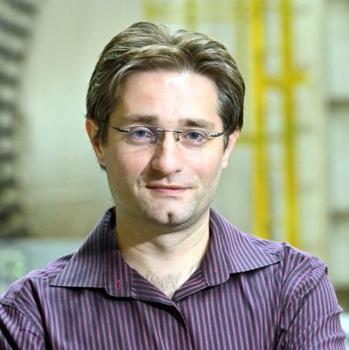
Corneliu STOICA
National Institute for Aerospace Research (INCAS), Romania
Abstract : Supporting the Quiet Cities Skies - The Evolution of Testing Capabilities for Next-Gen Aircraft at INCAS
With a long-standing tradition in aerospace research, INCAS has established itself as a leading research and development institute in Eastern Europe. For over a decade, our core expertise has been the advancement of aeroacoustics, leveraging specialized testing infrastructure to validate novel technical solutions within major European projects. This deep-seated knowledge forms the foundation for our current focus: addressing the critical challenge of noise in Urban Air Mobility (UAM). As the demand accelerates for next-generation aircraft, including air taxis and cargo vehicles, INCAS is evolving its testing capabilities to support the development of quieter solutions. This work is fundamentally applied to ensure the sustainable integration of UAM into urban airspace.
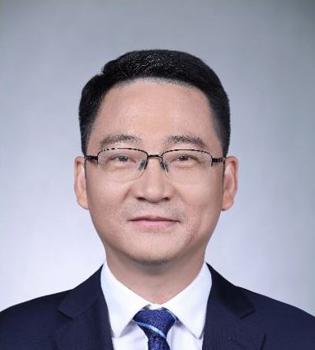
Qijun ZHAO
Nanjing University of Aeronautical and Astronautics, China
Abstract : New Progress in Research on Helicopter Aeroacoustic Prediction and Suppression
Focusing on helicopter aeroacoustics, this report introduces the new progress of relevant research from the aspects of aerodynamic noise prediction methods, sound generation mechanisms, propagation characteristics, and suppression technologies. It mainly includes: prediction methods for helicopter aerodynamics and noise, sound generation mechanisms and propagation characteristics of helicopter aerodynamic noise, helicopter aerodynamic noise suppression technologies, as well as the development trends and existing issues of helicopter aeroacoustics
Other Speakers
Hongsen BAO
The Hong Kong University of Science and Technology, Hong Kong
Abstract : The air vehicle flyover noise assessment in complex urban wind conditions
The low-altitude economy and urban aircraft industry are growing rapidly; however, the deployment of low-altitude aircraft has led to increasing noise pollution concerns. In this presentation, low-altitude aircraft flyover noise impacts on urban areas with complex wind conditions are investigated through a comprehensive simulation framework. Effects of the atmospheric boundary layer on sound transmissions are first examined by employing an improved Gaussian beam tracing method for sound propagations in inhomogeneous flows. The results reveal that even in a steady stratified wind, the airflow refraction and ground reflection will lead to complex sound propagation features, altering the spatial distributions of sound intensity and frequency spectrum. Further, noise transmissions in a typical urban canyon scenario with complex airflows around buildings are simulated. It is observed that the aircraft noise intensity undulates violently at the upwind side of the buildings due to strong wind refractions, and there are downwind noise intensities ripples caused by airflow wakes behind buildings. These studies highlight the substantial impacts of urban airflows on noise propagations, emphasizing the necessity of integrating urban wind patterns into air vehicle noise assessment models and noise-aware flight planning strategies.
Jiahua HE
The Hong Kong University of Science and Technology, Hong Kong
Abstract : Prediction of complex sound source propagation by transfer learning
Noise impact represents a significant consideration for the long-term, sustainable development of Urban Air Mobility (UAM). To facilitate efficient noise assessment, various computational methods have been developed for predicting noise propagation, such as geometric acoustic theory and machine learning. Among these, machine learning methods demonstrate considerable potential for efficient noise evaluation. Our prior research indicates that a U-shaped neural network (UNet) can effectively predict noise propagation within urban environments. However, in real application, the terrain and sound source the variability of source patterns increases the difficulty of prediction, and labelled data is often limited in real-world applications, such as simulations and experiments. To address these challenges, transfer learning (TL) emerges as a promising technique for adapting pre-trained models to new data domains. In this work, a TL method and a learning strategy were studied to improve model performance in more complex source and terrain scenarios with limited data size. Results demonstrate that the application of the TL method allows for good performance even with limited data.
Xun HUANG
Peking University, China
Abstract : Recent Advancements in Aeroacoustic Modeling, Measurement, and Perception at Peking University
In this talk, we will showcase the aeroacoustic research achievements from our team at Peking University over the past five years. First, we will introduce our Wiener-Hopf modeling results for wave scattering, by incorporating machine learning techniques, and for sound radiation from an elliptic-shaped duct. This research lays the foundation for subsequent mode detections in measurement and health monitoring applications. Following that, we will discuss our near-field aeroacoustic source analysis methodology based on the acoustic analogy. We are also making progress in advancing fiber-optic acoustic imaging technology for drone noise sources visualization. Most recently, we have embarked on an investigation into the psychoacoustics of low-altitude aircraft, performing perceptual assessments of propeller noise under various operating conditions and developing active noise control strategies to minimize annoyance levels.
Qichen TAN
Soochow University, China
Abstract : Low-noise flight of low-altitude aircraft in urban environments
With the rapid development of the low-altitude economy, low-altitude aircraft such as drones and eVTOL vehicles are increasingly integrated into urban environments, and their noise pollution has drawn growing public concern. This presentation will introduce an innovative low-noise flight planning method for low-altitude aircraft. By integrating comprehensive noise assessment with practical path planning technology, this approach optimizes flight paths and operational strategies to effectively reduce both continuous noise and peak instantaneous noise levels. We have successfully applied this framework to various scenarios, including point-to-point flight missions and multi-aircraft last-mile delivery route design in urban areas. These applications demonstrate its significant noise reduction benefits. This low-noise flight planning approach offers a practical and effective technical solution for the sustainable development of the low-altitude economy.
Zimo WANG
The Hong Kong Polytechnic University, Hong Kong
Abstract : Efficient aerodynamic noise prediction for the multirotor unmanned aircraft systems for low-altitude economy
With the increasing maturity of unmanned aircraft systems (UAS) and their indispensable role in the low-altitude economy, concerns over noise emissions have become crucial among the public. This study aims to develop an efficient noise prediction model for multi-rotor UAS considering the geometrical installation effect and complex flight motions. The hybrid model combines multiple aerodynamic principles to simulate rotor tip vortex evolution and blade aerodynamic loadings. The stationary airframe is modeled using the surface singularity method to capture its influence on rotor wake development. These interactions induce unsteady flows on the rotor blades, which act as the primary loading noise sources in the acoustic analogy and are evaluated using unsteady airfoil theories. Based on this approach, the noise emissions at a specified observer location can be efficiently computed. We will first focus on the noise prediction for simplified rotor systems, including isolated and coaxial rotors in flight conditions, single rotor interacting with supporting strut, etc., and the results are compared against high-fidelity numerical simulations for validation. Then, to demonstrate the capability of the proposed framework, a full multirotor UAS will be studied. This research provides a practical and efficient tool for preliminary UAS noise assessment, with potential applications in urban air mobility and low-noise UAS design.
Nick ZANG
Queen Mary University of London, UK
Abstract : On the aeroacoustics of electric propellers interacting with turbulence of varying scales
Hybrid and fully-electric propulsion system driven by propellers is a promising candidate for powering the next-generation passengers aircrafts, advanced air mobility vehicles as well as service drones. Unlike their counterparts found in conventional rotorcrafts, they often are smaller in size and operate at higher rotational speeds. More importantly, they encounter significant installation effects owing to the more sophisticated vehicular design (i.e., distributed, multi-rotor, etc.). Therefore, it is crucial to revisit the aerodynamics and aeroacoustics of these hybrid/electric propellers to uncover new physical events that can potentially impact on the performances of the propeller.
The present work investigates the aeroacoustic characteristics of a 2-bladed electric propeller when being subjected to incoming turbulence of varying length-scales, generated in the wake of a cylinder structure. The work has been carried out using both experimental measurements and numerical simulations. The experiments were carried out in an aeroacoustic facility, where the far-field acoustics and the flow field were measured by polar microphone arrays and hot-wire anemometry, respectively. The experimental results provide the first-hand information of the propeller aeroacoustics, which allows the selection of cases for numerical simulation. The numerical simulations were performed using lattice-Boltzman solver coupled with large-eddy simulation to resolve the turbulence.
The results show that compared to the baseline, the noise emitted by the propeller notably increases when it ingests a turbulent incoming flow. Such an increase is primarily broadband over a full range of frequencies. Moreover, ‘haystacking’ phenomenon, manifested as a ‘blue-shifted’ broadband peaks, can be observed, but only for the incoming turbulent flow with high levels of intensity and sufficiently large length-scales. Interestingly, acoustic modulation around the tonal peaks also appears due to the periodic nature of the turbulence.